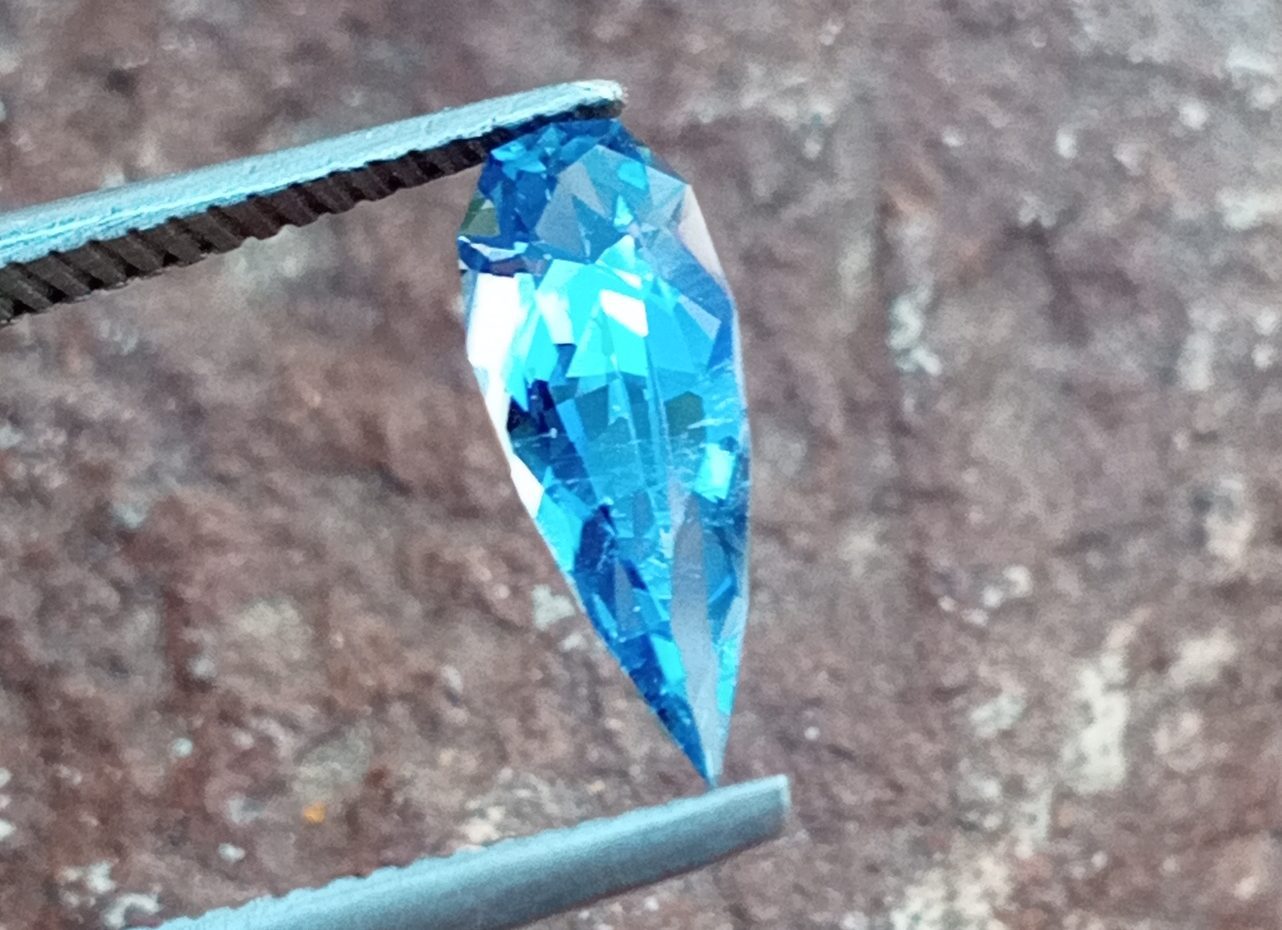Jeremejevite Value, Price, and Jewelry Information
Jeremejevite would make a durable and attractive jewelry stone, but this rare mineral occurs even more rarely as facetable material. Recently, new sources have been discovered, but jeremejevite remains mainly a prized collector’s gem.
2 Minute Read
Jeremejevite would make a durable and attractive jewelry stone, but this rare mineral occurs even more rarely as facetable material. Recently, new sources have been discovered, but jeremejevite remains mainly a prized collector’s gem.
Start an IGS Membership today
for full access to our price guide (updated monthly).Jeremejevite Value
In this video, Jake Talve-Goodman of The Concierge Gemologist introduces viewers to the world of jeremejevite and discusses its sourcing, formation, symbolism, and jewelry use.
What is Jeremejevite?
Discovered in Russia in 1883, jeremejevite (pronounced yer-ah-mee-YAY-vite) was long available only as microscopic grains. In the 1970s, this rare borate mineral was discovered in large, facetable crystals in Namibia. However, lapidaries cut very few gems from this material, because mineral collectors prized these specimens.
What Color is Jeremejevite?
Recent discoveries of this gemstone at additional sites in Namibia and other locations have made available more facetable material in a wider range of pale colors. In addition to colorless, light blues, and yellow-browns, jeremejevites can show greenish, light yellow, golden yellow, and even violet colors. (Its light blue to blue-green hues have drawn comparisons to aquamarines).
Does Jeremejevite Make a Good Jewelry Stone?
With a hardness of 6.5 to 7.5 and no cleavage, jeremejevite could make a suitable jewelry stone selection. However, it remains rare and — for the time being — largely unknown to jewelry enthusiasts.
Identifying Jeremejevites
Jeremejevites are piezoelectric. This means these gems generate electricity when placed under pressure.
In addition to having overlapping ranges of color and hardness with aquamarine and quartz, jeremejevite crystals, particularly in prismatic hexagonal shapes, can resemble these other gem species. However, jeremejevites have a higher refractive index (RI) range and specific gravity (SG).
Jeremejevite rough and cut set. Crystal: 4.7 x 0.3 x 0.2 cm; narrow emerald-cut gem: 1.13 cts, 11.05 x 3.79 mm. Mile 72, Cape Cross area, Swakopmund District, Erongo Region, Namibia. © Rob Lavinsky, www.iRocks.com. Used with permission.
Are There Synthetic Jeremejevites?
Scientists have synthesized jeremejevite only in micro-crystalline form and as an OH-end member — with no fluorine (F) present — for research purposes. There is no known jewelry use for this lab-created material.
There are no known gem treatments or enhancements for jeremejevites.
Where are Jeremejevites Found?
First discovered as small, single crystals in loose granitic debris under the turf on Mt. Soktuj, Nerchinsk district East Siberia, Russia, jeremejevites were first found in facetable form in Cape Cross, near Swakopmund, Namibia. These were very long, blue-green pyramidal crystals, up to 2 cm (e = 1.639; o = 1.648; birefringence 0.007).
In 2001, Namibia revealed a new source, about 180 km east of Cape Cross in the Erongo Mountains near Usakos.
Additional sources include the following:
- Eifel volcanic area, Germany: micro-crystals.
- Tajikistan: southwestern Pamir Mountains and from the Fantaziya and Priyatnaya pegmatite veins of the eastern Pamirs.
- Madagascar; Myanmar; Sri Lanka.
Stone Sizes
The Swakopmund crystals could yield faceted gems up to about 5 carats. However, typical faceted stone sizes from this material range from under 1 carat up to about 2 carats.
New sources have produced much larger faceted jeremejevites. The 2008 Tucson Gem and Mineral Show featured a 59.58-ct faceted gem from Madagascar. In 2014, The Journal of Gemmology published a study of a faceted jeremejevite weighing 106.50 cts. Reportedly cut from a 254-ct rough found in Sri Lanka in the 1990s, this is the largest known faceted jeremejevite.
How to Care for Jeremejevites
Although jeremejevites can make durable jewelry stones, avoid cleaning them in mechanical systems that involve ultrasound or steaming. These gems may contain inclusions, notably liquid inclusions, that could shatter these rare stones if subjected to these methods. Instead, use warm water, mild detergent, and a soft brush.
Consult our gemstone jewelry cleaning guide for more recommendations.
Joel E. Arem, Ph.D., FGA
Dr. Joel E. Arem has more than 60 years of experience in the world of gems and minerals. After obtaining his Ph.D. in Mineralogy from Harvard University, he has published numerous books that are still among the most widely used references and guidebooks on crystals, gems and minerals in the world.
Co-founder and President of numerous organizations, Dr. Arem has enjoyed a lifelong career in mineralogy and gemology. He has been a Smithsonian scientist and Curator, a consultant to many well-known companies and institutions, and a prolific author and speaker. Although his main activities have been as a gem cutter and dealer, his focus has always been education. joelarem.com
International Gem Society
Related Articles
Black Diamond Value, Price, and Jewelry Information
Chameleon Diamond Value, Price, and Jewelry Information
Gray Diamond Value, Price, and Jewelry Information
Green Diamond Value, Price, and Jewelry Information
Latest Articles
800 Years of Mogok: A Celebration in Tenuous Times
What is the Average Gemstone Faceting Yield?
Pyroxmangite Value, Price, and Jewelry Information
How to Identify Emerald Simulants and Synthetics
Never Stop Learning
When you join the IGS community, you get trusted diamond & gemstone information when you need it.
Get Gemology Insights
Get started with the International Gem Society’s free guide to gemstone identification. Join our weekly newsletter & get a free copy of the Gem ID Checklist!
